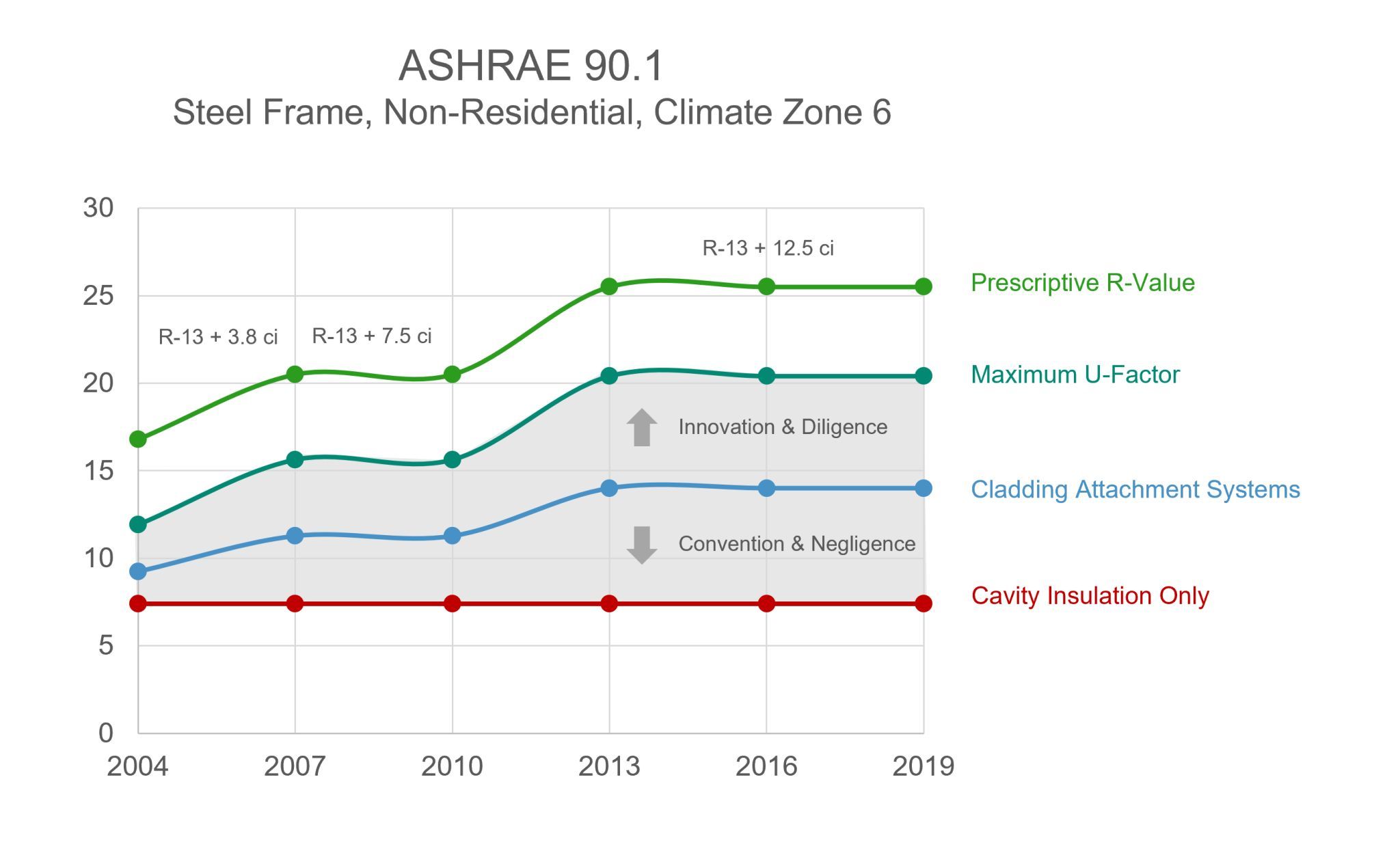Tags: #architecture #ashrae #buildingcodes #buildingdesign #buildingscience #insulation

A comparison of minimum code requirements versus true thermal performance: Nearly 20 years of mediocrity.
Here, I compare minimum code requirements over time for a single climate zone. The time frame corresponds to each release of ASHRAE 90.1 as the industry embraced continuous insulation. These curves are juxtaposed to a correction factor that conveys true performance with the addition of cladding attachment systems. In other words, an average effective R-value when considering a myriad of systems – some creative and effective, most not so much. I’ve also plotted a straight reference line corresponding to a batt-filled cavity wall.
The shaded region represents a range of expected performance under two opposing practices: innovation versus convention; or diligence versus negligence. Aside from cladding attachment systems, there are many factors that shape the true performance of our assemblies: workmanship, temperature-dependent performance, moisture-dependent performance, convective forces, and even fasteners. And when we consider all of these factors, we are closer to that red line than we care to think.
I’ll be presenting this information and my work on the effects of fasteners at Dupont’s upcoming Building Science Master Summit.